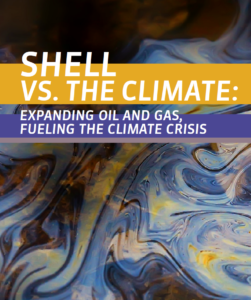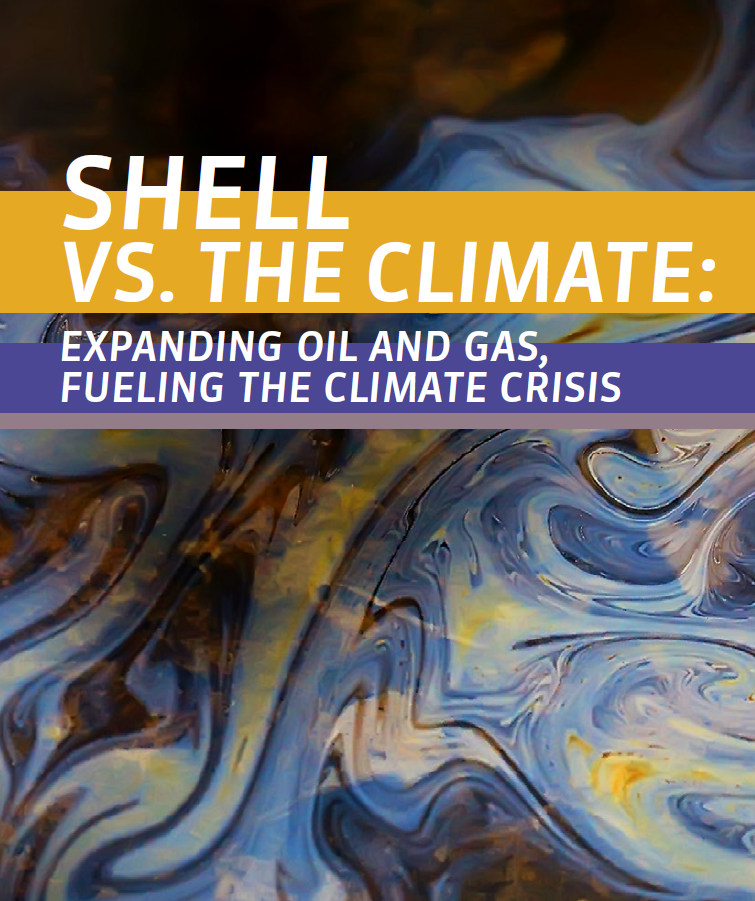 Oil Change International & Milieudefensie
Oil Change International & Milieudefensie
March 2024
Recognizing that Shell’s business activities have been a relevant cause of the climate damage that is putting people’s lives at risk, the Dutch district court of The Hague handed down a verdict on May 26, 2021 requiring Shell to take responsibility for its ongoing climate pollution and align its business plans with the goals of the Paris Agreement on climate change.
The climate case verdict, which Shell is appealing, requires the company to reduce the net carbon-dioxide (CO2) emissions caused by its business activities, including the oil and gas it sells to customers, by 45% below 2019 levels by 2030.
In this briefing, we provide an updated assessment of Shell’s fossil fuel extraction plans in light of both the court verdict and the latest climate science, building on a September 2022 data briefing released by OCI and Milieudefensie.
Our analysis shows that Shell continues to plan for levels of oil and gas production and investment that undermine the world’s chances of curtailing climate disaster and are incompatible with holding global temperature rise to 1.5 degrees Celsius (°C).
Specifically, we find that:
- Shell has approved development of at least 20 new extraction assets since the Dutch court verdict of May 2021. Together, these projects commit more than 2.1 billion barrels of new oil and gas equivalent (BOE) to extraction, threatening 753 million tonnes (Mt) of CO2 pollution cumulatively. That is more than 5 times the CO2 emissions of the Netherlands in 2021.
- Rather than writing off undeveloped oil and gas as unextractable under the 1.5°C warming limit, Shell is actively seeking more of it. According to data from Rystad Energy, close to 60% (813) of 1,386 oil and gas extraction assets owned in whole or part by Shell are undeveloped. The projected volume of undeveloped oil and gas in Shell’s portfolio (14.7 billion barrels) has grown by 24% since our 2022 briefing.
- By ceasing approval of new oil and gas fields as of 2024, Shell could help keep 14.7 billion BOE of undeveloped oil and gas in the ground and 5.3 billion tonnes (Gt) of CO2 emissions out of the atmosphere. That is equivalent to 38 times the CO2 emissions of the Netherlands in 2021. An additional 6.7 Gt of CO2 emissions are already committed by Shell’s producing and under construction projects.
- If Shell were to extract all its economically viable oil and gas resources (developed and undeveloped) the resulting CO2 pollution (11.9 Gt CO2) could exhaust as much as 5.7% of the world’s remaining carbon budget for a 50% chance of holding warming to 1.5°C. This is before accounting for the additional carbon emissions caused by the oil and gas Shell sells but does not directly produce.
- In the summer of 2023, Shell dismissed its target to reduce oil production by 1-2% annually, announcing plans to keep oil production steady through 2030. If Shell continues approving new fields for development, Rystad Energy modelling indicates that Shell’s oil and gas production and the CO2 emissions caused by burning it could increase by 10% between 2022 and 2030. In that case, CO2 emissions from Shell’s oil and gas production could rise at a higher rate between 2022 and 2030 than global oil and gas emissions under the International Energy Agency’s Stated Energy Policies Scenario (STEPS) – a scenario aligned with a disastrous 2.4°C of global temperature rise.
- By contrast, Shell could go a long way towards aligning its oil and gas production with the climate case verdict and the 1.5°C limit by ceasing to develop new extraction. If Shell were to stop approving new projects and cease construction of projects not yet producing as of 1 January 2024, the decline in production from already operating fields would lead to a 41% drop in CO2 emissions from burning oil and gas extracted by Shell by 2030, relative to 2019 levels. This would still be lower than the 45% overall reduction mandated for Shell’s total CO2 emissions by the climate case verdict, but it would be a significant step in that direction.

